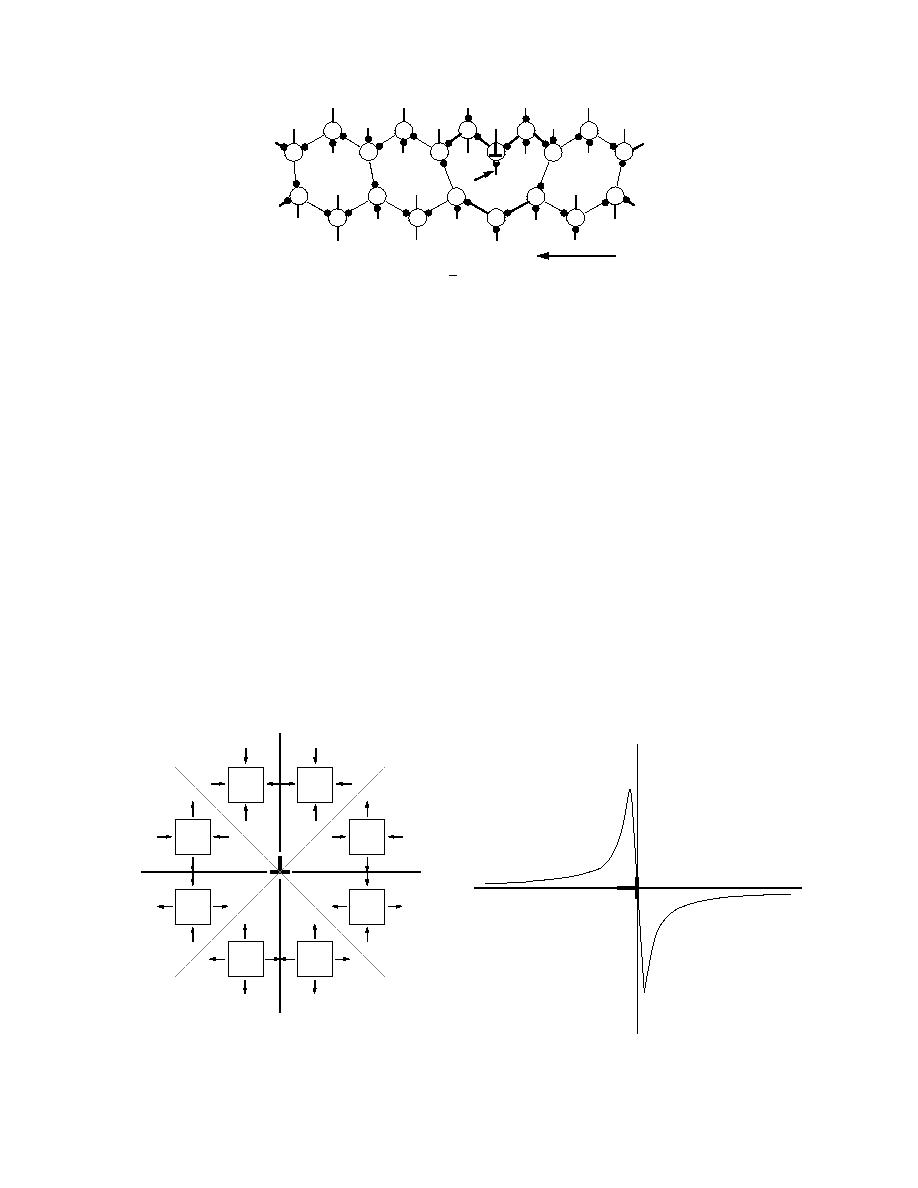
b
Figure 32. Section in the (1100) plane of a 60 dislocation
on a plane of the shuffle set in the structure of ice, illustrat-
ing the dangling bond in the core.
materials and semiconductors. Though there are no
such dangling bonds may exchange protons with an
theoretical papers on the electrical charge of disloca-
ice bulk.
tions in ice, some reasons for formation of such a
Second, a mechanism that may result in a net dislo-
cation charge is strong elastic interaction between a
charge are obvious.
protonic charge carrier--i.e., ions and Bjerrum de-
First, the charge may originate from electrical ac-
fects--and strain generated by a dislocation. Figure 33
tivity of dangling hydrogen bonds in the dislocation
illustrates stress patterns in the vicinity of an edge
core. Figure 32 illustrates a dangling bond in the core
of a 60 dislocation. A dangling bond may or may not
dislocation. As is seen from this figure, the dislocation
generates compression in the upper quadrants and ten-
have a proton on it. In the first approximation, the
sion in the lower ones.
probability of finding a proton on a dangling bond is
The specific volumes of protonic charge carriers
50%, since when a regular hydrogen bond breaks into
(ions and Bjerrum defects) exceed that of a water mol-
two dangling bonds, one proton is shared between two
ecule (Evtuschenko et al. 1987, Evtuschenko and
bonds. It is generally acknowledged that a regular hy-
Petrenko 1991). Thus, all these charged defects should
drogen bond is electrically neutral. The dangling
accumulate in the lower quadrant and escape from the
bonds of a dislocation core introduce electron energy
upper one. Figure 34 shows schematically the change
levels or narrow energy bonds located in the forbidden
in defect activation energy as a function of the x coor-
band of ice. Depending on the relative position of a
dinate, also shown in Figure 33. Since for the protonic
Fermi level and the dislocation levels (bands), the ex-
defects in ice αi ranges from 1.2 to 6.8 eV and εii is
change of electrons between the dangling bonds and
about 0.1 in the vicinity of a dislocation core, the bind-
the bulk ice will result in a net negative or positive
ing energy, αi εii, of the defects on an edge dislocation
charge of the dislocation. It is not known at present if
αεii
x
x
Figure 33. Directions of the principal stresses in the
Figure 34. Change in activation energy αεii of a charge
vicinity of an edge dislocation. The dislocation line is
carrier in ice in the vicinity of an edge dislocation.
directed perpendicularly to the figure's plane.
23




 Previous Page
Previous Page
